From Mexico to Los Angeles, La Virgen de Guadalupe has no borders. Her image can be found anywhere from corner markets to food trucks is a constant reminder that Latinos are presente (here).
As her origin story is traditionally told year after year, La Guadalupana’s story began on top of a hill in Tepeyac México. On December 9, 1531, she appeared to an indigenous man named Juan Diego. Speaking to him in Nahuátl, she instructed that a church should be built on top of the hill in her honor. A rumored mountain to have previously been home to a temple dedicated to the goddess Tonantzin means “our sacred mother.”
When Juan Diego went to what is now Mexico City to deliver her message to archbishop Juan de Zumárraga, he was asked for a miracle from La Virgen to prove it. So after visiting her one more time, he made his way back to the city, and on December 12th, he presented roses to the archbishop. And as it is famously known after laying down the roses, an imprint of La Virgen de Guadalupe appeared on his tilmátli (cloak).

Since then, her story and image continue to be told and celebrated every December by thousands, both in Mexico and the United States. And because La Guadalupana's image is so iconic in Mexican households, it’s hard for most people to pinpoint the first time they came across her image.
“Every time I get to see her, it makes my heart smile, and I know other people feel the same way...”
For 33-year-old photographer Oscar Rodriguez from Lynwood, the earliest memory he has is an old VHS tape that he watched every year with his family. “I can't really remember the name, but there was this movie that my mom would play for us, and it was about Juan Diego when he stumbles upon La Virgencita,” he said.
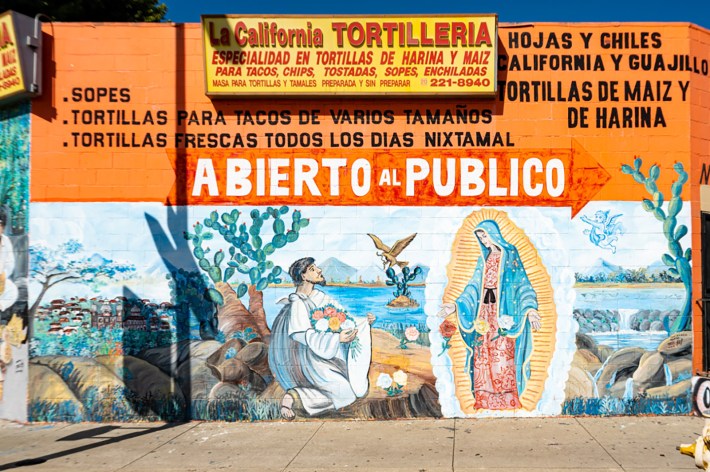
L.A. natives like Rodriguez celebrate and honor La Guadalupana year-round.
Through his Instagram page @_LaVirgencita, he immortalizes her image through his photography, which documents her murals and shrines throughout Los Angeles. And although he doesn't consider himself a religious man, to him, La Virgencita is a reminder of home, Latinidad, and love.
“She reminds people of home...”
“Every time I get to see her, it makes my heart smile, and I know other people feel the same way,” he said. “I think for L.A. County or really any Latinx community, her image has become a symbol of representation that screams, ‘Hey, aquí estamos’ (we are here).”

The freelance photographer said that he never feels out of place whenever he goes out to look for murals in new neighborhoods. The moment he comes across her image, he feels safe and a sense of belonging. A feeling that immigrant communities in Los Angeles can relate to, according to him.
This is why her murals’ documentation is so vital to Angelenos because it is also a way of preserving their culture.
“She reminds people of home, reminds them of the country they left for a better future for them and their children. And I think it's something we can all connect with, no matter what country of the Americas you are from, we all somehow connect through La Virgencita,” said Rodriguez.
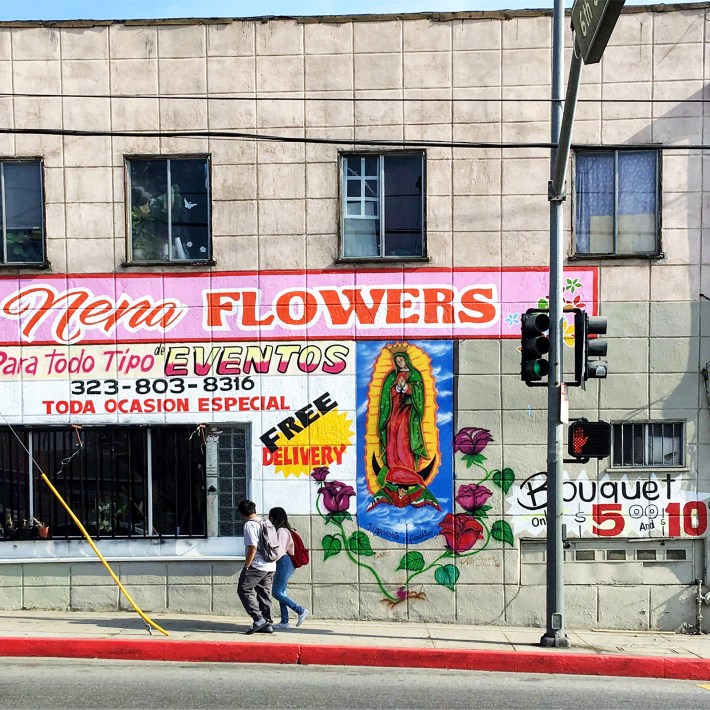
Isis Alcaraz, an employee at La California Tortilleria in Glassell Park, agrees with Rodriguez, her early memories of La Virgen trace back to her homeland of Colima, Mexico. From a young age, she recalls her parents being adamant about them visiting “La Lupita.” To her being able to see La Guadalupana every day before she walks into work gives her a nostalgic feeling and reminds her of her upbringing in Colima.
...he quickly realized that he wasn't just documenting La Virgen, but also how specific neighborhoods in L.A. were drastically changing.
“She represents our culture and reminds us of where we came from. We feel a sense of pride being in her presence es muy bonito (it’s really nice),” Alcaraz expressed over the phone. “She goes beyond the border of Mexico. That’s why they call her the Mother of the Americas. We all have a piece of home here because of her.”
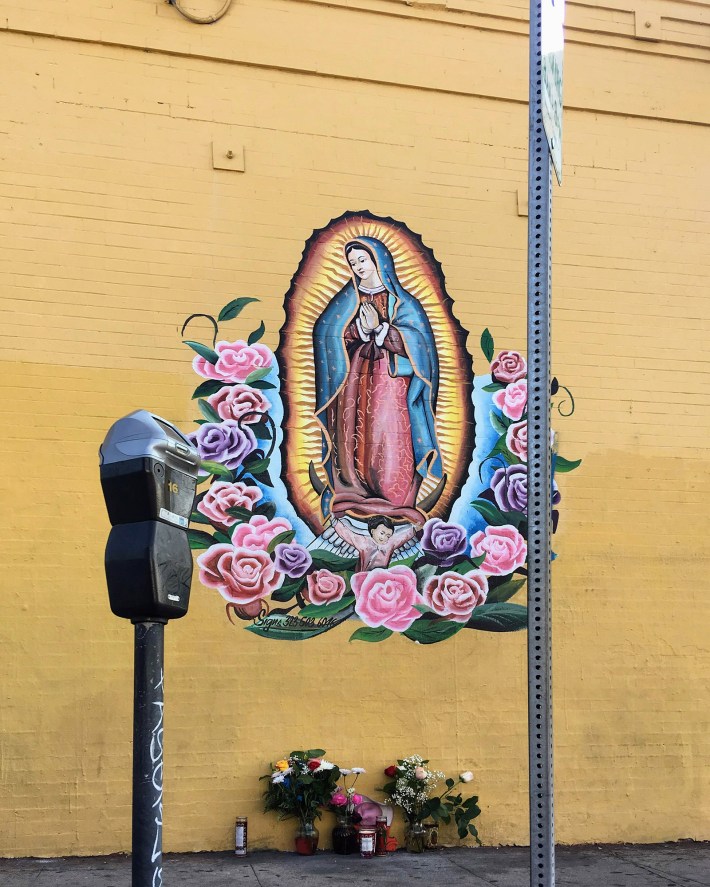
This is why her murals’ documentation is so vital to Angelenos because it is also a way of preserving their culture. Especially when worry has grown over the years due to the rapid growth of gentrification in L.A.’s barrios, an issue that Rodriguez noticed a few years into his project, he quickly realized that he wasn't just documenting La Virgen, but also how specific neighborhoods in L.A. were drastically changing.
“Gentrification itself is already erasing our presence and our history. These new owners come in and seem to not care about the history or the community,” he said. “I have witnessed it myself whenever I revisit an area and see a mural being painted over with something else that has nothing to do with La Virgencita or the neighborhood's culture.”
Like Rodriguez, Paramount photographer Nydya Mora also started her journey of documenting La Guadalupana in 2012. And what initially started as a small gesture for her mother turned into a full-on project.
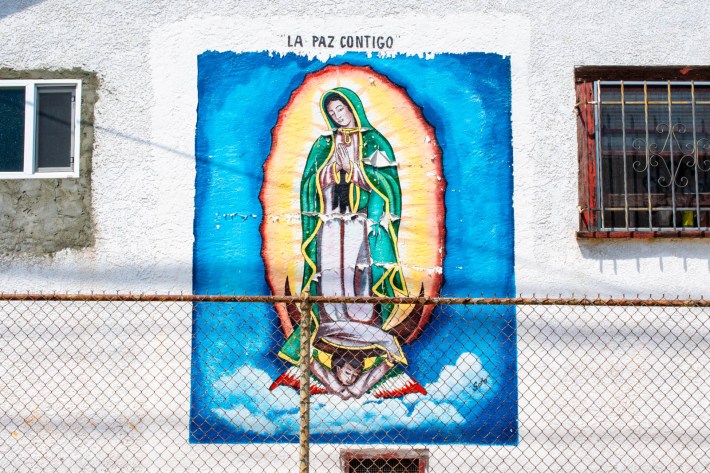
“As a token of appreciation for my mother, I just started taking these photos and wanted to make like a small table book for her, but it ended up not going anywhere because I ended up losing all my photos,” said Mora.
After losing her photos, Mora decided to retrace her steps and went back to document the murals and shrines she had once photographed. But when she went back, some of the murals were already gone. She said that through her documentation on her Instagram @Virgensdela, she has also seen the damaging effects that gentrification can have on her communities.
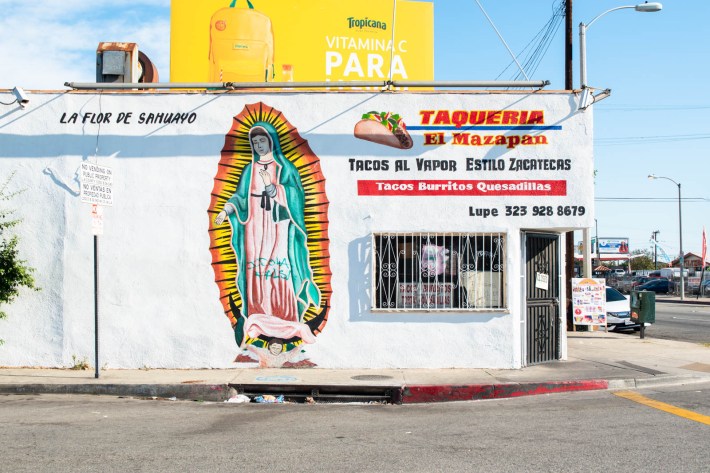
“After seeing that, I did feel like a sense of urgency to document the ones that are still here and to document the culture that is under threat of being erased,” said Mora.
A culture that she grew up with, although Mora also doesn't consider herself a very religious person, she respects and appreciates the hope that La Virgen inspires in people. As a kid, she remembers going with her family to their local church and waiting in line to leave roses in front of La Virgen. She said, “by the end, she would be drowning in roses.”
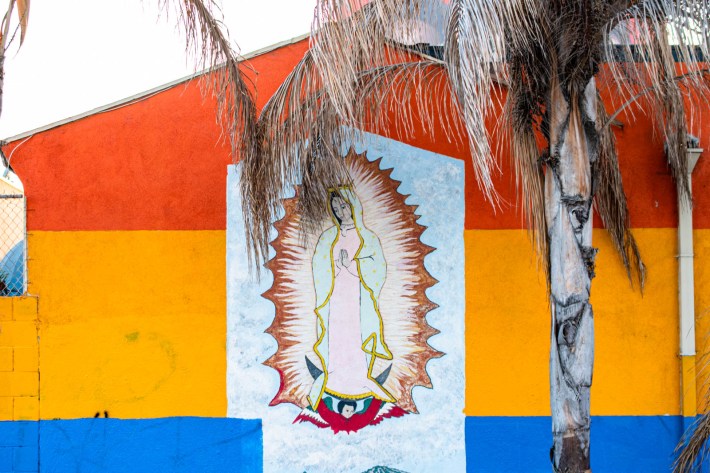
This year due to the pandemic and current stay-at-home orders, the public won't be able to celebrate La Guadalupana the way they usually do with big parades, music, food, and large crowds. Instead, some will celebrate her from the comfort of their homes to avoid exposing themselves or their family to COVID-19. A virus that has significantly impacted the Latino community. According to the California Health Department, over 600,000 cases have been reported among Latinos.
“She also represents endurance, like times are hard, but we will get through this.”
“I think La Virgen does represent hope in these desperate times, more so now that we’re experiencing this second wave which seems to be worse than the first one,” said Mora. “She also represents endurance, like times are hard, but we will get through this.”
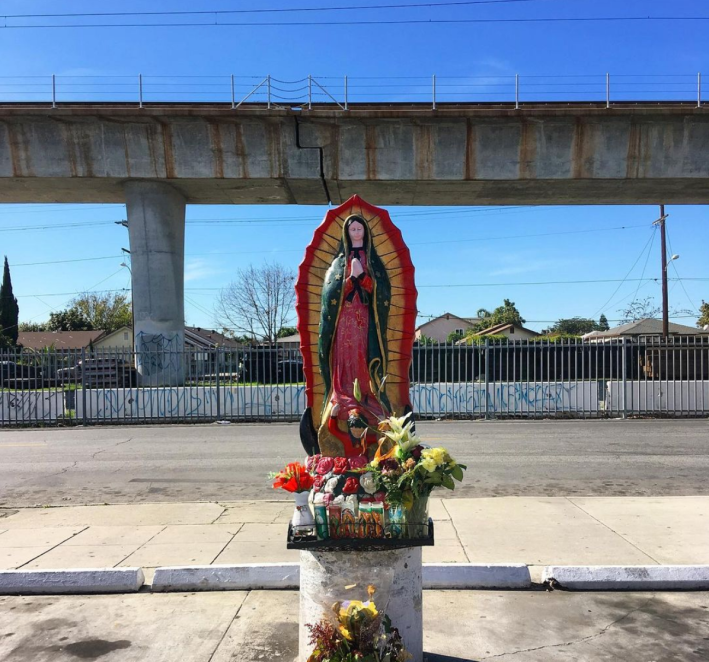
The owner of Nena’s Flowers in Boyle Heights, Alma Rodriguez, can relate to people seeking La Virgencita for some type of comfort or sign that everything will be ok. She has been in business for two years now and said she has never experienced anything like this pandemic.
When she first opened her business, she said having La Virgen de Guadalupe painted outside her shop was a must. To her, the image is a way of blessing and protecting her business, and like many, it's also a reminder of her roots.
“I’m from Puebla, Mexico, so when I see her image, it allows me to never forget where I’m from...”
“I’m from Puebla, Mexico, so when I see her image, it allows me to never forget where I’m from,” she said. “What I love about her is her story and the miracles she’s known for; I am grateful for miracles she's blessed me with.”
She credits La Virgencita for her business opening, which she said almost didn't happen because someone had outbid her for the building she's currently in. But not long after she said she received a call asking her if she was still interested in the building, sure enough, the previous person had backed out, and she eagerly said yes.
It’s because of people like Alma and Alcaraz that Rodriguez and Mora dedicate their time to documenting La Virgencita. Because every business, neighborhood, or house where she is found has a deeper story behind it.
“I love everything about our Latinx community, so it makes me feel happy whenever I share a photo and see the response from followers,” said Rodriguez. “It’s also something that we can keep forever, no matter what changes around us.”







